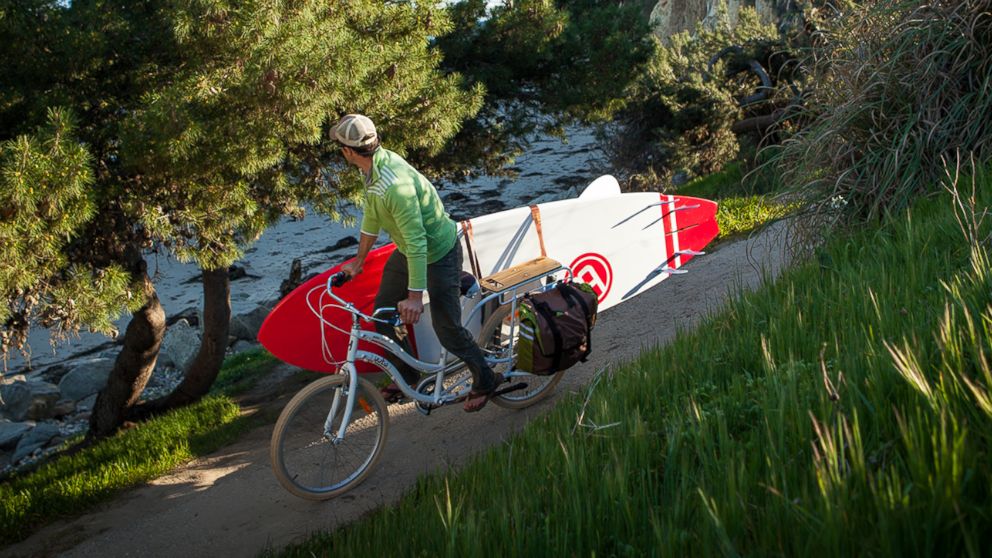Cargo Bikes Are the New SUVs
Sophisticated cargo bikes may be the new SUVs.

Dec. 17, 2013 -- Need to move a mattress, a refrigerator, or a week's worth of groceries? Just throw them in the basket of your bike -- provided, of course, you've got a newfangled cargo bike, the "SUV" of cycling.
In Europe, cargo bikes are a common sight, having been around for 80 years or more. In the U.S., they're comparatively new and few. "A niche of a niche," cargo bike builder Lane Kagay calls them. Kagay hand-builds about nine of his CETMA-brand cargo bikes a week from a workshop in Venice, Calif.
Metrofiets Cargo Bikes of Portland, Ore., says its annual production is in the low hundreds. Co-founder Phillip Ross said that even at that level, his company qualifies as one of the biggest cargo-bike builders in the U.S.
Though cargo bikes are a niche market, experts say it's a niche that's growing fast, thanks in part to consumers who want to live greener lives and to the sheer novelty of using bikes to transport big, unlikely objects.
Bicycling one secret to longevity
Asked for an example of how his buyers use their bikes, Kagay told ABC News: "It's not unusual for a group of owners to get together to move an entire house. It happens fairly often now in the Pacific Northwest. They'll get together in a kind of weekend rally, and, by the time it's done, they'll have moved somebody's entire household belongings -- mattresses, dressers, couches."
Michael McKisson of Tucson, Ariz., told ABC News he has done exactly that. "I've helped friends move. The biggest thing I've moved so far was a bookshelf -- I could barely see over the top of it while riding. We moved an entire apartment. I had a full-sized bed laid across my bike. Half the fun of this is figuring how much you can handle." He calls cargo bikes "the minivan for bikey families."
McKisson, publisher of TucsonVelo, a bicycle news site, said he and his wife have gotten rid of their car altogether. Now, when they need a week's worth of groceries for themselves and their two kids, they peddle down to the store, load up, and bring it home in one trip.
The website for Yuba Bicycles in Petaluma, Calif., shows a cyclist using its Boda Boda cargo bike to transport a full-sized surfboard.
The biggest difference between a conventional bicycle and a cargo bike is weight-carrying capacity. Cargo bikes are built to handle loads of up to 400 pounds. Their frames must be correspondingly strong. About 400 pounds is pretty much the upper limit, Kagay said, because above that threshold "considerations of propelling and stopping" become an issue.
Cargo space can be oriented different ways, depending on the rider's needs: some models carry cargo on a low-slung forward platform, in front of the rider, where, depending on the model, it either sits naked or inside a big container. In other designs, cargo sits behind the rider. While there's a limit to how much weight can be carried, volume is limited only by the width of the street.
Kagay's prices start at $3,100 per bike, delivered. The addition of a big wooden cargo box in front costs another $300. Ross's price for a fully built-out bike, delivered, is $3,795 and up.
Authorities on cargo bikes say there are no restrictions that apply to their use, over and above whatever restrictions a community may have imposed on conventional bikes.




